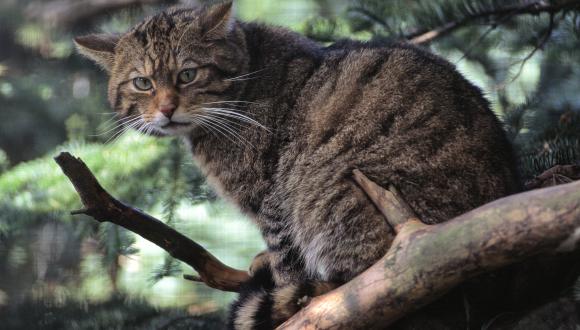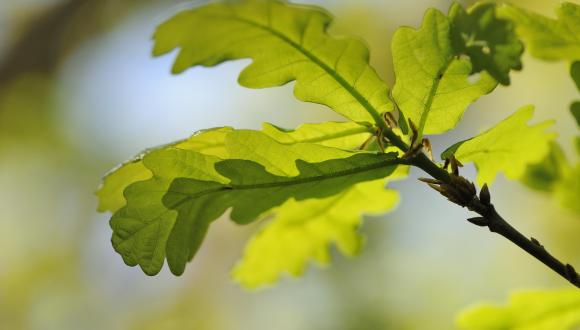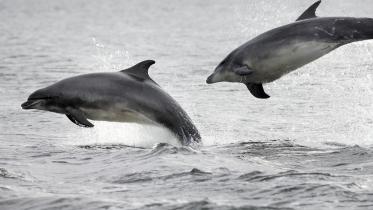Guidance licensing - Test 2 - No satisfactory alternative - Licence in relation to European Protected Species
European Protected Species Licensing
Test 2 – No satisfactory alternative
Interpreting Regulation 44(3)(a) of the Conservation (Natural Habitats, &c.) Regulations 1994 (“the Habitats Regulations)
Note: This Guidance contains a summary of certain legal provisions relevant to the licensing regime, current at time of writing, for European Protected Species and is intended to assist parties contemplating a licence application. However, Scottish Natural Heritage has no legal responsibility for the contents and interested parties should in that respect seek independent legal advice.
1. Introduction
1.1 Under Regulation 44 of the Habitats Regulations certain activities which would normally constitute an offence against European Protected Species (EPS) can be carried out legally under a licence. Further information on EPS and background legislation can be found in Annex 1.
1.2 Any decisions made by NatureScot as the licensing authority must be fully compliant with the requirements of the Habitats Regulations and the underlying European legislation. This means that before any licence can be issued there are three strict tests which must all be satisfied. These are as follows;
- That the activity proposed must fall within one of the licensable purposes listed in Regulation 44,
- That there is no satisfactory alternative; and,
- That the action authorised will not detrimental to the maintenance of the population of the species concerned at a favourable conservation status in their natural range.
1.3 This paper sets out our general interpretation of the second test (under Regulation 44(3)(a)), of ‘no satisfactory alternative’ to the granting of a licence and sets out the type of information we would expect from applicants to demonstrate that this test is passed.
1.4 See Guidance on test 1.
2. Interpretation of No Satisfactory Alternative
2.1 ‘No satisfactory alternative’ is not defined in the Habitats Directive and there is no interpretation of the concept in the Habitats Regulations.
2.2 European Commission (EC) guidance on protected species1 suggests an analytical approach to establishing whether there is ‘no satisfactory alternative’. The approach stems from a ruling from the European Court of Justice (ECJ) (case C-10/96) concerning the derogation procedure under Article 9 of the Birds Directive.2 This procedure has close parallels with the Article 16 derogation requirements of the Habitats Directive. The suggested approach is to ask:
1 European Commission (2007) Guidance document on the strict protection of animal species of Community interest under the Habitats Directive 92/43/EEC
2 The test under Article 9 is that there is ‘no other satisfactory solution’.
- What is the problem or specific situation that needs to be addressed?
- Are there any other solutions?
- If so, will these resolve the problem or specific situation for which the derogation is sought
2.3 This methodology is also referred to in other EC guidance on sustainable hunting under the Birds Directive3, which concludes that ‘where another solution exists, any argument that is it not “satisfactory” will need to be strong and robust’.4
3 European Commission (2008) Guidance document on Hunting under the Birds Directive, page 45
4 Ibid, section 3.4.10, page 47
2.4 Guidance from the European Commission and Scottish Government in relation to ‘no satisfactory alternative’ (and the equivalent test in Article 9 of the Birds Directive) includes the following key points, which will be considered in relation to any licence application;
- The issue of a licence can only be justified on the basis of an ‘objective demonstration’ that there is no other satisfactory solution5.
- Alternatives might involve alternative locations/routes, different development scales or designs, adjusting the timings of development works happening on site or delaying a proposal, or alternative activities, processes or methods.
- The appraisal of whether an alternative is satisfactory or not must be founded on objectively verifiable factors, such as scientific and technical considerations6.
- Another solution cannot be deemed unsatisfactory merely because it would cause greater inconvenience to or compel a change in behaviour by the beneficiaries of a licence.
- Licences must only be issued as a last resort7.
- The solution/alternative finally selected, even if it involves a licence, must be objectively limited to the extent necessary to resolve the specific problem or situation (‘need’)8.
5 European Commission (2007) Guidance document on the strict protection of animal species of Community interest under the Habitats Directive 92/43/EEC , page 59, para. III.2.2 (39)
6 European Commission (2008) Guidance document on Hunting under the Birds Directive, page 47, para 3.4.12
7 European Commission (2007) Guidance document on the strict protection of animal species of Community interest under the Habitats Directive 92/43/EEC , page 59 para. III.2.2 (38)
8 Ibid, page 59 para. III2.2 (40)
2.5 In summary, for the ‘no satisfactory alternative’ test to be passed, NatureScot as licensing authority must be satisfied that no other option presented or possible can meet the identified and proven ‘need’ for which a licence is sought. Further, even if a ‘satisfactory alternative’ requires the granting of a licence, the impact on that species should be minimised.
3. Proportionality and cumulative impacts
3.1 According to ECJ case law, derogations from the Habitats Directive must be interpreted and implemented restrictively to avoid undermining the conservation aims of the Directive9.
9 Commission V UK (C-6/04) [2005] ECR 1-9017, para. 111
3.2 However, some proportionality is permitted in assessing a licence application according to guidance issued by the European Commission10, and which states:
10 European Commission (2007) Guidance document on the strict protection of animal species of Community interest under the Habitats Directive 92/43/EEC , page 53, para. III.1.2 (11)
3.3 Applying proportionality does not overrule or marginalise any of the conditions applying to the derogation scheme but can adapt their application in the light of the overall objective of the Directive. As a general rule, the severity of any of the conditions or “tests” will increase with the severity of the impact of a derogation on a species/population.’
3.4 The guidance also states, in summary, that ‘the type and weight of the reason [for which a licence is sought] must also be seen in relation to the interest of the protected species in the concrete and specific circumstances in question in order to judge the appropriateness of a derogation’11. In other words, when applying proportionality to the licensing tests, we will require greater justification for proposals as the severity of the impact on the species concerned rises.
11 Ibid, page 58, para. III. 2.1
3.5 We will also consider the cumulative impacts of licensing decisions on the species concerned as part of the assessment process. This approach will ensure that ‘the derogations in their totality do not produce effects that go against the objectives of Article 12 and the Directive as a whole.’12
12 Ibid, page 53, para. III.1.2.(12)
4. What type of information would we require from a licence applicant?
4.1 It is ultimately the responsibility of the licensing authority to assess whether or not there is a satisfactory alternative to solve the identified problem or address the need for which a licence is sought. However, in doing so we will require objective and robust evidence, provided by the applicant to demonstrate the range of alternatives considered, and why they are not considered to be ‘satisfactory’.
4.2 This responsibility is neatly summarised in Paragraph 23 of the Scottish Government’s guidance to local authorities on licensing arrangements (2001) which states that:
‘The implication of [test 2]… is that the applicant must be able to show that the full range of possible alternative courses of action have been properly examined and that evaluation of these alternatives clearly demonstrates that the only satisfactory means of proceeding requires the carrying out of activities which, legally, may only be conducted under licence.’
4.3 It is the responsibility of the applicant to provide us with sufficient evidence on the satisfactory nature of the chosen way forward. The full range of alternatives should be explored and robust arguments and evidence presented to identify why these are inadequate. Supporting paperwork should be submitted with all licence applications. These documents might include plans and statements from appropriate scientific or technical experts.
4.4 NatureScot will consider the evidence provided by the applicant against the criteria described in this document and in the relevant European Commission Guidance. We cannot grant a licence unless we are satisfied that all of the three tests (including, in this case, the licensable purpose) have been satisfied. If a licence is refused we will offer clear reasons for refusal.
Scottish Natural Heritage - July 2011
Annex 1
European Protected Species and the law in Scotland
The Habitats Directive (Council Directive 92/43/EEC on the conservation of natural habitats and of wild fauna and flora) lists certain species of animals and plants on Annex IV(a) and (b) respectively, that require strict protection. The Habitats Regulations transpose the requirements of the Directive. The Regulations term those Annex IV species occurring naturally in Britain ‘European protected species’ (EPS). These species are listed in Schedules 2 and 4 of those Regulations. Those that occur in Scotland are listed below;
| Common name | Scientific name |
|---|---|
| Bats, typical (all species) | Vespertilionidae |
| Wildcat | Felis silvestris |
| Otter | Lutra lutra |
| Dolphins, porpoises & whales (all species) | Cetacea |
| Loggerhead turtle | Caretta caretta |
| Green turtle | Chelonia mydas |
| Kemp’s ridley turtle | Lepidochelys kempii |
| Hawksbill turtle | Eretmochelys imbricata |
| Leatherback turtle | Dermochelys coriacea |
| Natterjack toad | Bufo calamita |
| Great crested newt | Triturus cristatus |
| Sturgeon | Acipenser sturio |
| Common name | Scientific name |
|---|---|
| Killarney fern | Trichomanes speciosum |
| Slender naiad | Najas flexilis |
| Yellow marsh saxifrage | Saxifraga hirculus |
Published: 2011
Contact
If you already have a licence number, include it in the subject line of your email, or have it to hand when you call.
Disclaimer: Scottish Natural Heritage (SNH) has changed its name to NatureScot as of the 24th August 2020.
At the time of publishing, this document may still refer to Scottish Natural Heritage (SNH) and include the original branding. It may also contain broken links to the old domain.
If you have any issues accessing this document please contact us via our feedback form.





